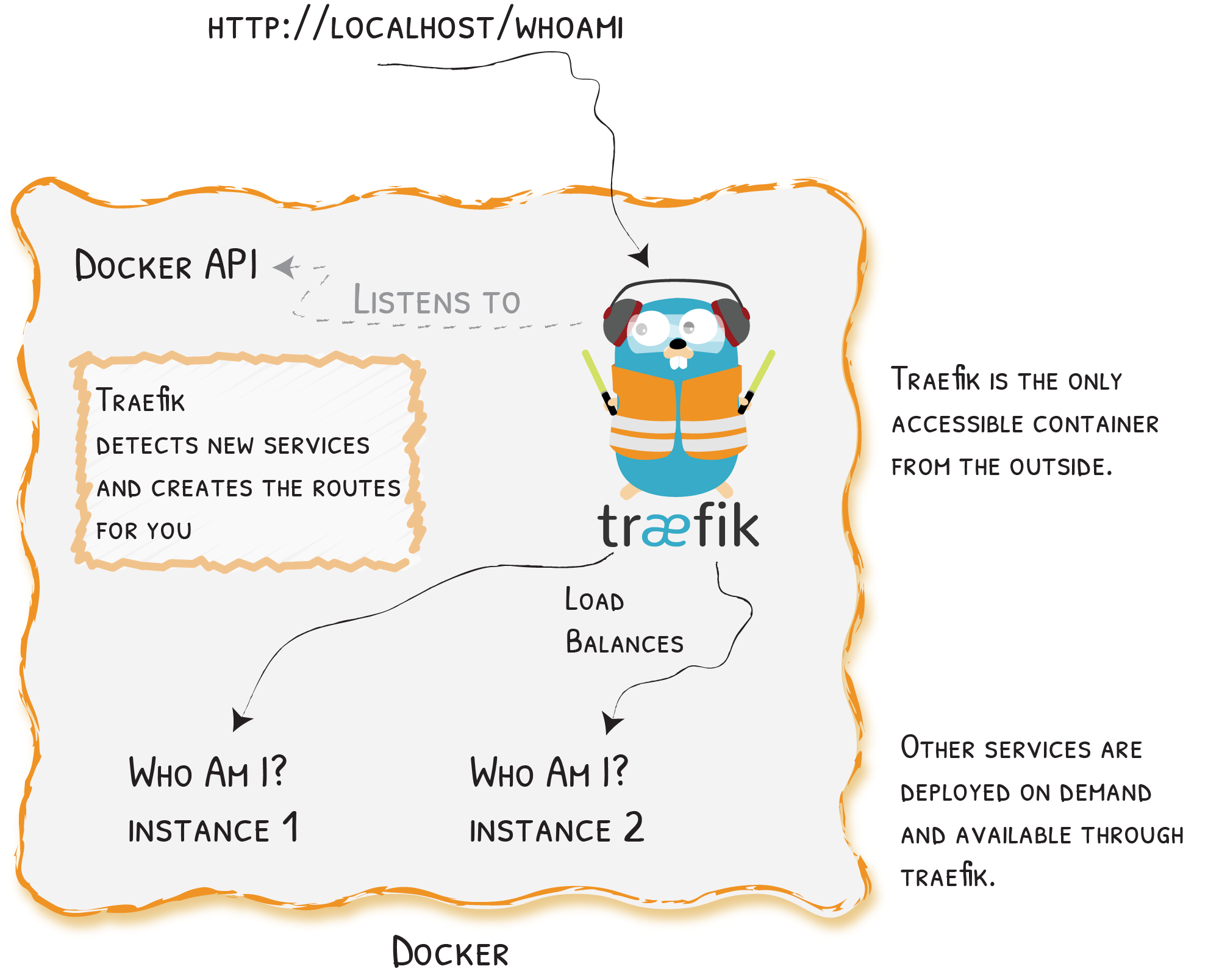Quick Start¶
A Use Case Using Docker

Launch Traefik With the Docker Provider¶
Create a docker-compose.yml file where you will define a reverse-proxy service that uses the official Traefik image:
version: '3'
services:
reverse-proxy:
# The official v3 Traefik docker image
image: traefik:v3.0
# Enables the web UI and tells Traefik to listen to docker
command: --api.insecure=true --providers.docker
ports:
# The HTTP port
- "80:80"
# The Web UI (enabled by --api.insecure=true)
- "8080:8080"
volumes:
# So that Traefik can listen to the Docker events
- /var/run/docker.sock:/var/run/docker.sockThat's it. Now you can launch Traefik!
Start your reverse-proxy with the following command:
docker-compose up -d reverse-proxyYou can open a browser and go to http://localhost:8080/api/rawdata to see Traefik's API rawdata (you'll go back there once you have launched a service in step 2).
Traefik Detects New Services and Creates the Route for You¶
Now that you have a Traefik instance up and running, you will deploy new services.
Edit your docker-compose.yml file and add the following at the end of your file.
version: '3'
services:
...
whoami:
# A container that exposes an API to show its IP address
image: traefik/whoami
labels:
- "traefik.http.routers.whoami.rule=Host(`whoami.docker.localhost`)"The above defines whoami: a web service that outputs information about the machine it is deployed on (its IP address, host, and others).
Start the whoami service with the following command:
docker-compose up -d whoamiBrowse http://localhost:8080/api/rawdata and see that Traefik has automatically detected the new container and updated its own configuration.
When Traefik detects new services, it creates the corresponding routes, so you can call them ... let's see! (Here, you're using curl)
curl -H Host:whoami.docker.localhost http://127.0.0.1Shows the following output:
Hostname: a656c8ddca6c
IP: 172.27.0.3
#...More Instances? Traefik Load Balances Them¶
Run more instances of your whoami service with the following command:
docker-compose up -d --scale whoami=2Browse to http://localhost:8080/api/rawdata and see that Traefik has automatically detected the new instance of the container.
Finally, see that Traefik load-balances between the two instances of your service by running the following command twice:
curl -H Host:whoami.docker.localhost http://127.0.0.1The output will show alternatively one of the following:
Hostname: a656c8ddca6c
IP: 172.27.0.3
#...Hostname: s458f154e1f1
IP: 172.27.0.4
# ...Where to Go Next?
Now that you have a basic understanding of how Traefik can automatically create the routes to your services and load balance them, it is time to dive into the user guides and the documentation and let Traefik work for you!
Using Traefik OSS in Production? Consider Adding Advanced Capabilities.
Add API Gateway or API Management capabilities seamlessly to your existing Traefik deployments. No rip and replace. No learning curve.